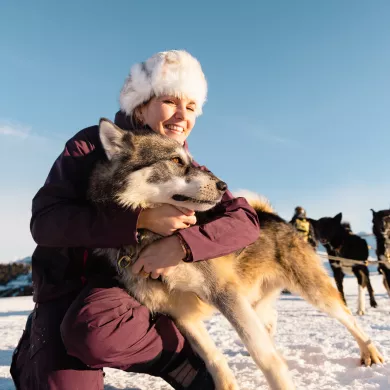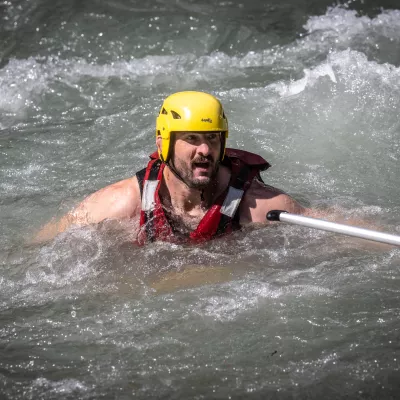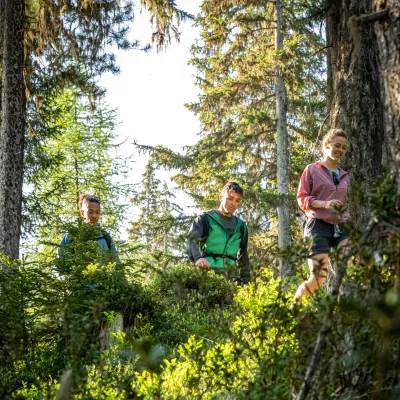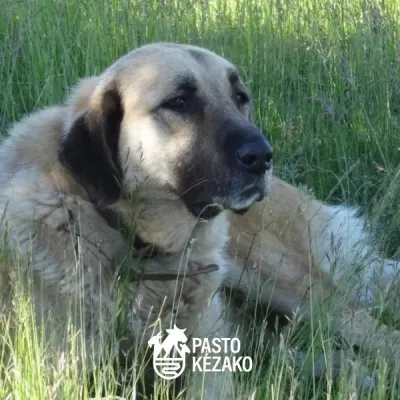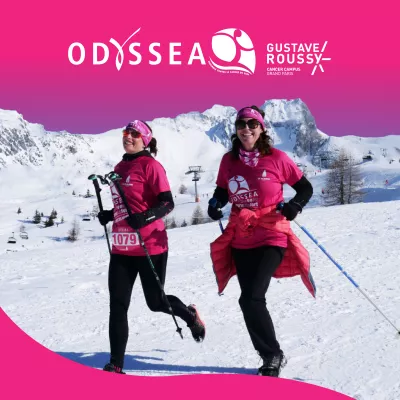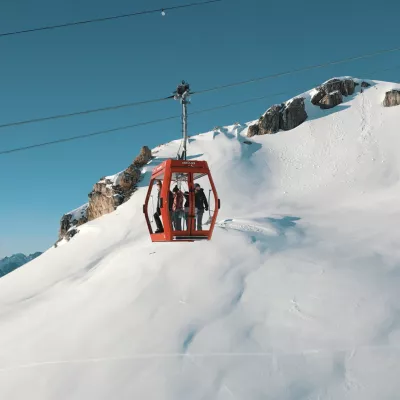Siberian huskies, Alaskan huskies, Greenland dogs… the mere names of Nordic dogs have the power to take us off to the Arctic Circle! Perfectly adapted to the extreme conditions in these regions, some of the iciest places on the planet, they have also been charming animal lovers living in less hostile latitudes for centuries. Rightly or wrongly? So that we can decide for ourselves, let’s take a look at three enduring misconceptions!
Nordic dogs are extremely wild (the proof being that they howl like wolves)
Anyone who has already passed close to a team of sled dogs will know how intimidating their ‘conversations’ can be! There are indeed mmany races of Nordic dogs that howl like wolves rather than barking, (particularly when they are excited or impatient). This is true of Siberian huskies, the best-known sled dogs, whose name of course suggests this straight away. This vocal characteristic, along with their extraordinary physical ability (power, speed, endurance), make Nordic dogs very impressive beasts.
However, behind the traits that bring their ancestors, wolves, to mind (to one extent or another according to their race), Nordic dogs are highly affectionate. Siberian huskies were even a real favourite with the Chukchi (a Siberian people who are known to have had Siberian huskies some 2,000 years BC) for their ability to integrate themselves into family life and act as companions to their children.
Each dog nonetheless has its own unique personality and it is in their ability to choose the right dog for the right activity (or the right place in the team) that the talent of the musher (i.e. the person who drives the dog sled) lies.
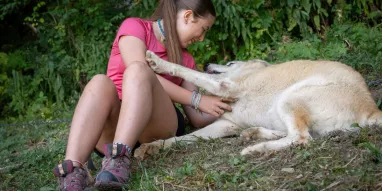
The least fearful dogs and the ones that are the most at ease with children are used for dog treks, an original summer activity that consists of hiking while harnessed to a dog that pulls its human companion along on the trails (practical on climbs, sporty on the way down!).
Nordic dogs are all capable of pulling very heavy loads
If all Nordic dogs are known for their ability to pull, they are not all equal when it comes to heavy loads. Greenland dogs have the reputation of being tireless: they can – and love to! – pull heavy loads for several kilometres (which makes them the champion sled dogs), whilst Siberian huskies are faster and more enduring but can ‘only’ pull their own weight.
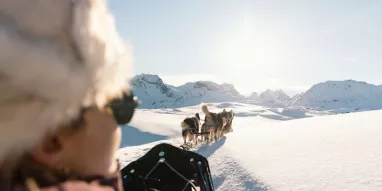
The Alaskan husky is not actually a breed of dog: it is a species that comes from a mix of other breeds of dog (Siberian husky, pointer, greyhound, etc.). According to its ancestry, it will be more or less powerful, fast or enduring.
On the other hand, all Nordic dogs have a natural need to get lots of exercise (which explains why they are so happy in the mountains… and so unhappy in an apartment). It is better to be a naturally sporty person when it comes to taking them for walks! Rest assured if you are planning to try a dogs treks though: only the least powerful of the dogs are used for this summer activity (which is nonetheless invigorating!).
Nordic dogs are only meant to live in conditions of extreme cold
Siberian huskies, Alaskan huskies, Greenland dogs… In the collective imagination, Nordic dogs only live in conditions of extreme cold. After all, it’s always very cold in the Far North, isn’t it? Well actually… no, it’s not! In Siberia, for example, temperatures are usually well above zero in summer (average temperature 20°C, with peak temperatures reaching 35°C). A bit like in our mountains in fact.
This is why Nordic dogs are the kings of all sports activities that involve pulling people, in every season(dog sledding in winter, dog treks in summer). The Siberian husky, for example, is naturally endowed with a double coat (undercoat and top coat) that insulates it from the intense cold in winter (down to -50 / -60°C) and temperatures that can be high in summer. This is why it is important not to cut their fur, even if their long, thick hair may seem at first sight to be unsuited to the weather in July and August!

The dog sledding memo
👩👦 180 kg max (not counting the weight of the sled) – Adults and children aged 2 and over
🐶 No skills required: you just need to sit comfortably in the sled and the musher will drive the team of 7 to 10 dogs
- ✨ Book your sled dog outing (winter only)

The dog treks memo
🧒 Minimum age 6 – Children aged 6 to 12 must be teamed with an adult (to be able to resist the pulling quite safely)
🥾 Activity for energetic walkers
🐶 One dog per person (or for a team of an adult + child aged 6 to 12)
✨ Book your trek with a dog (summer only)
💡Useful to know: the dog trek trails follow a stream so that the dogs can drink regularly.

